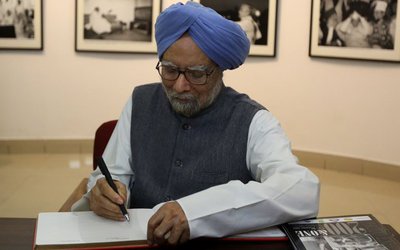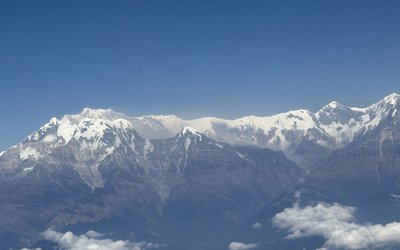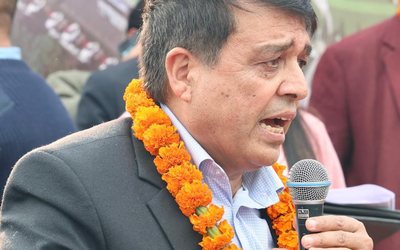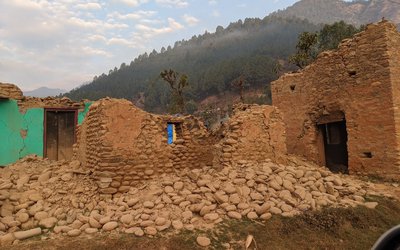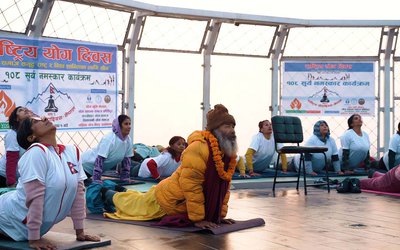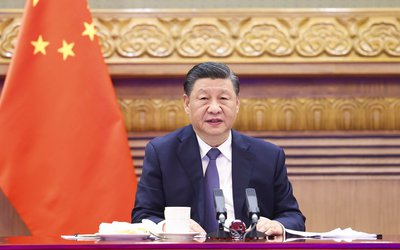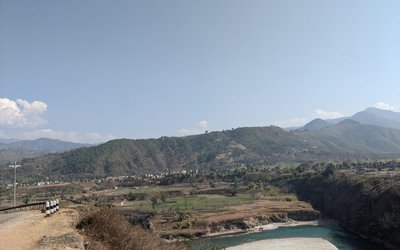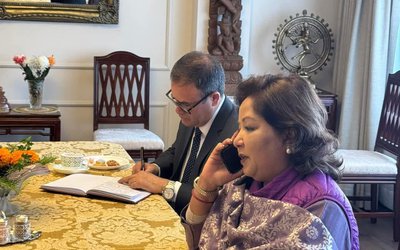The ongoing debate on Millennium Challenge Corporation (MCC) reminds me the one that was on in Nepal two and half decade ago which ended then with a letter from the then leadership of the Nepal Communist Party (United Marxist-Leninist), commonly known as UML to The World Bank that acted as the last nail on the coffin of Arun-3 Hydropower Project. The consequence was retardation of the comprehensive development of the Eastern Hills of Nepal by decades. Although the terms of loan from the Bank was very attractive for Nepal then, the Bank was quite happy to withdraw the fund as it was the last of its kind and it was already facing the financial crunch. The problem with Arun-3 was that it was made excessively expensive due to putting the cost of building of both highway and transmission line on the price of the generated electricity. As the transmission line being the energy highway and useable by other hydro projects in the area and the road having multiple uses, the cost of their construction putting on the price of electricity generation of Arun-3alone was not at all justified. With this approach, if every hydropower project would need its own transmission line, then hydropower development of Nepal would never be economically feasible and environmentally sustainable.
For a long time, non-availability of power evacuation was and still is one of the biggest obstacles for several projects in Nepal. Then Nepal had no plan for the badly needed network of the national electricity transmission lines. The other criticism of Arun-3 at that time was that if Nepal were to take up that Project it would not be allowed to implement any other hydropower projects for about a decade. It was meant for Nepal to utilize the energy produced by the Project of its full capacity as Nepal had a history of up and down in energy utilization as at times the produced energy was wasted as it could not be consumed by household utilization alone and industrialization had not taken place as much as it was needed. I was not sure about it as I had no opportunity to look into the Project document then. Such a condition would not have been acceptable to me as well as I had already initiated establishment of Lamjung Electricity Development Company (LEDCO), the first power production company in Nepal at the private sector from micro and small projects. I was confident that such issues could have been resolved through negotiated settlements.
Although Arun-3 was replaced by Kali Gandaki and Middle Marsyandi Projects, the latter was implemented in such a way that it took double the time and costed nearly three times the original estimation. By the end of the project, the generated power was lost as it could not be evacuated just because the much-needed transmission line was not available. This not only caused a huge loss to the national coffer but also exacerbated the delay in construction of other projects in the Marsynadi corridor. Already acute level of power shortage enforced unbearable load shedding in the country, that was artificially enforced upon the people as the related stakeholders profited from the huge business of import of diesel power generators. Although the delay of Middle Marsyandi Project construction was alleged to the Maoist armed insurrection, the reality was more to the inefficiency and corrupt practices that were rampant in Nepal Electricity Authority (NEA) that had monopolized the control of all sizes of power projects. Their cumulative effect was thevery high cost to the consumers, people and industries alike.
I was astonished already to find once that a fully occupied four-star hotel in Kathmandu was paying less than what I was doing personally on my domestic use of electricity of one family of five. Many influential persons and families had not paid their electricity bills for several years although they received continued supply with gross abuse of freely obtained power. Many communities were found to steal the power by using the hook on the electric power lines and NEA had no control over them.All this led me to suggest Dirgha Raj Koirala who was the Chief Adviser of the Prime Minister Girija Prasad Koirala that with the changed political situation, the government should not be doing A to Z of the power sector. It should limit itself in policy development and coordination and bulk buying and bulk selling of power and invite private sector in collaboration with international investors in hydro-power development projects. Utility sector management could be decentralized and there was no need of a mammoth bureaucracy of NEA that still checks the meters of every household consumer. The Electricity Consumers' Committee that emerged later out of Lamjung Development Model has already set a workable example.
Dismantling of NEA into a few entities by establishing a separate company of national power transmission lines was needed with at least three major lines of 400KV capacity each connecting Koshi, Gandaki and Karnali corridors to an 800KV line in Terai that could connect to the load centers of North India. Similar three north-south lines along the same river corridorswould be needed in future that could be developed in collaboration with the Chinese Government connecting to their load centers in Tibet to suit their programs of development of Tibetan Plateau. Without aiming for export of at least 25,000MW of hydroelectricity and going totalinggreen in energy utilization, one cannot think of any prosperity of Nepal. This argument is based upon my own workthrough participatory approach of stakeholders' consultation around the country and application of Logical Framework in development of the long-term national strategy of water resources utilization that was endorsed then by Nepal Government.Given the political will, having the attitude of learning from the past mistake and competent national diplomacy, the above can and should be a workable proposition. The ongoing MCC Project on 400KV transmission line is the first step in this direction that connects the Gandaki corridor to a load center in Gorakhpur, India.
My involvement in planning and reviewing of Makalu-Barun Project took me to the area allowing me to study the grassroot problems of the local people and politicians who were also opposing Arun-3. Often it was their petty political interestlike connecting the Chainpur bazar by road was boiling them up to oppose the Project. Such a problem could have been easily resolved with an access road through a fishbone like road network connecting the communities to the Highway. What I was aiming at then was to looking into the feasibility of getting at least 1% of the total budget of the Arun-3 in economic development of local people who could be engaged inproducing quality consumable items like food (grains, meat, poultry, fish, vegetables, fruits) and their processed products, and drinks making the Project to purchase them compulsorily by not allowing it to import such things from outside during the project period. By the end of the project, the production and market systems in at least three districts of Bhojpur, Shankhuwa-Sabha and Dhankuta could be well established that could be connected to the Indian markets.BP Koirala's social-democracy as well as national reconciliation could be operationalized at this local level and all the local forces -- congressis, communists and former Panchas could come together for social transformation of this area.
Such a scheme could change the landscape of this part of the Eastern Hills and it could be replicated elsewhere as well. As I had quite a good access then to the leaders of all three major parties Nepali Congress (NC), CPN-UML and Rastriya Prajatantra Party (RPP), I was confident to convince them to work together at this level. I came to know then that the Chairman of The Mountain Institute (TMI) that was implementing the Makalu-Barun Project was also a Board Member of the World Bank. I was working with the Project's team leader to organize a workshop involving all the political leaders of these districts to prepare a strategic plan on the above and present the outcome jointly to the TMI Chairman, whoalready had a plan to visit the area. If he could be convinced then the Bank could be easily brought on the track and I was sufficiently confident in myself to convince the Koirala Government then. Had Arun-3 allowed to go for implementation on the above scheme, the Highway could have already connected the Northern border much earlier opening export markets of the Arun basin products in both neighbors of Nepal. The local people would have become prosperous producers and entrepreneurs at home, and probably they did not have to be driven away by the gallas to the twentieth century slave market abroad for 3D (dirty, difficult and dangerous) jobs.
Coming to the present scenario, it is important to base our activities by taking the lessons of the past experience that includes Arun-3, especially when we are dealing with MCC. It is also absolutely important to observe the code of conduct in our activities based upon our non-alliance principlethat at times requires us to walk on a tight rope. We are required to keep a balanced diplomatic relation with all of them, especially all our big power friends. It will be a pity to the implementation of this country's hydropower development national strategy if MCC is put to death at this time as it will definitely question the business worthiness of Nepal that may take decades before counter argument can be established. Consequently, Nepal will lose several possibilities of external support and investmentsto regenerate its economy and remain forever as a poor country. Even now, it is reported that some of the offers coming from abroad have been shelved in some ministries probably because the related decision makers did not see their personal advantage in them as much as they wished for.
As one extreme action invites an opposite extreme one, it will be no surprise in the emergence of another group in Nepal that will oppose implementation of BRI scheme with China if the ongoing opposition against MCC is successful to cancel its implementation. Nepal will then be left in the mercy of Indian monopoly with its increased bargaining power in development of water resources, in which hydropower is only a fraction of so many other benefits to India including irrigation, drinking water, flood control, navigation and environmental protection. This is one possible scenario. The other scenario is that Nepal has already become a strategic location in the context of the emerging twenty-first century cold war. India and China are already here as our neighbors and the Americans are here to stay,whether MCC gets implemented or not. In the push and pull of these powers, Nepal is bound to get strangulated as Vietnam, Cambodia, Laos Korea in South East Asia and many countries in the Middle East, Africa and Latin America got during the twentieth century cold war. As there is likelihood of Nepal facing unprecedented challenges by the growing tensions among the superpowers, it needs a well thought out strategy for survival and prosperity based upon comprehensive analysis of the situation both for its foreign and domestic affairs. This strategy should aim at taking benefit of all appropriate supports by keeping good relation with all out friends.
Despite of early warnings from WHO on COVID-19 pandemic, and China's offer to support Nepal in checking the spread of the disease, Nepal Government gave a deaf ear to them claiming thatthe virus will not find its way to this country. They even failed to anticipate the magnitude of the problem that they would have no capacity to check the pandemic's spread in the country should it hit the southern neighbor targeting the millions of poor people, among them the Nepali labors working there. They could be the potential career of the virus while rushing home for survivalthrough the porous border with India. Even when, the government realized the need to check the pandemic, the action taken did not match the promptnessand appropriateness as demanded by the situation. Now the infection is increasing in such an alarming rate that it is demanding public health national emergency demanding a national war-footing strategy with out-of-box solutions. The business as usual approach of the state apparatus is seriously challenged to cope with the situation. The demand for diverting enormous resources will increase so intensely to respond to the virus and its post-recovery strategy that the wish to make much needed 400KV line on Nepal's own resources may end up asa lost dream. The status of Melamchi and so many other projects provide the mirror for Nepal's capacity of ongoing performance in project implementation and completion. Then the hydropower potential of Nepal will be limited within the poems of a few poets and the rhetoric of some politicians, as it has always been the case in the past.
Killing of George Floyd in Minneapolis has set a trigger in the United States in boiling the rage of on-going four centuries of oppression of African-Americans. COVID-19 pandemic has definitely added ghee at the fire as it is the black and brown Americans who have been disproportionately bearing the most of its toll reflecting the huge socio-economic gap still existing between them vis-a-vistheir white counterparts. There are several structural conditions of cold conflict like this existing since centuries in the South Asian Sub-continent including Nepal that can very easily trigger unprecedented people's unrest to which their respective governments would have very hard time to manage them. President Trump would be quite happy to withdraw the money set for MCC as he is already facing the cash crunch at home. Pity will then be on the poor Nepalis who always keep dreaming of prosperity out of hydropower development as the country will have to face a great deal of cash crunch in coming days as any available resource may end up in responding to the virus and millions returning home needing basic necessities and employment for survival. The rural areas even in remote places that seemed secured from the virus until a few days back are no longer so.
What is needed now, is not the debate or rhetoric that demonizes others but a dialogue among the concerned stakeholders sitting down coolly listening and talking with each other and coming to a conclusion with mutual understanding. Any contentious issue within the Project document can be clarified and negotiated for their acceptable solutions for mutual agreement.It is also important to mention here that for any dark cloud in the sky, one can always find a silver lining. One could perhaps find a proper way to build a new prosperity of Nepal out of home-based production and productivity by liberating it from the galla economy as compelled by this pandemic. Given the political will, it is simply a task of a two-day professionally facilitated workshop each among the stakeholders including opinion makers who need to lockdown themselves in a closed set up that can be easily organized at this time

